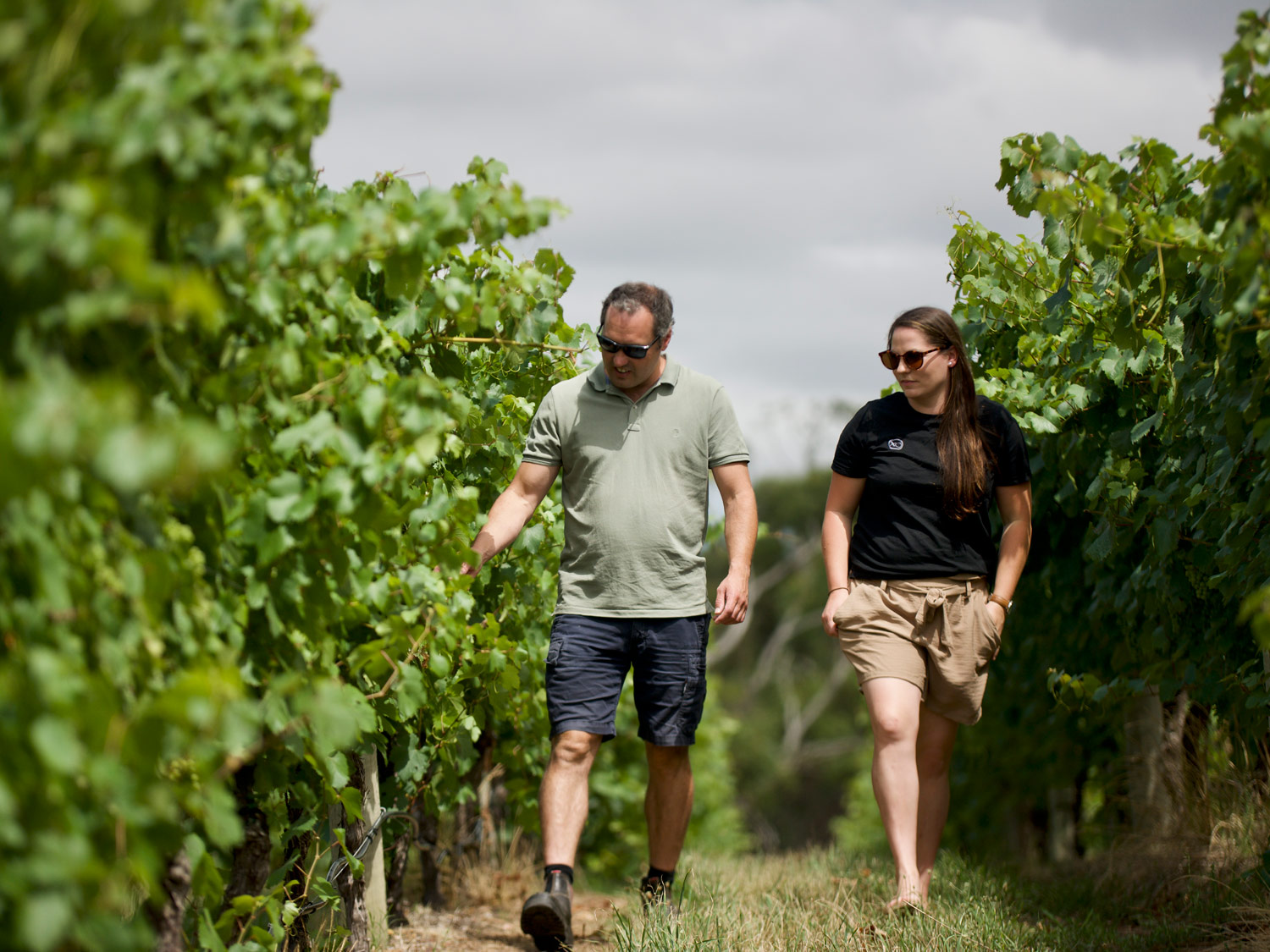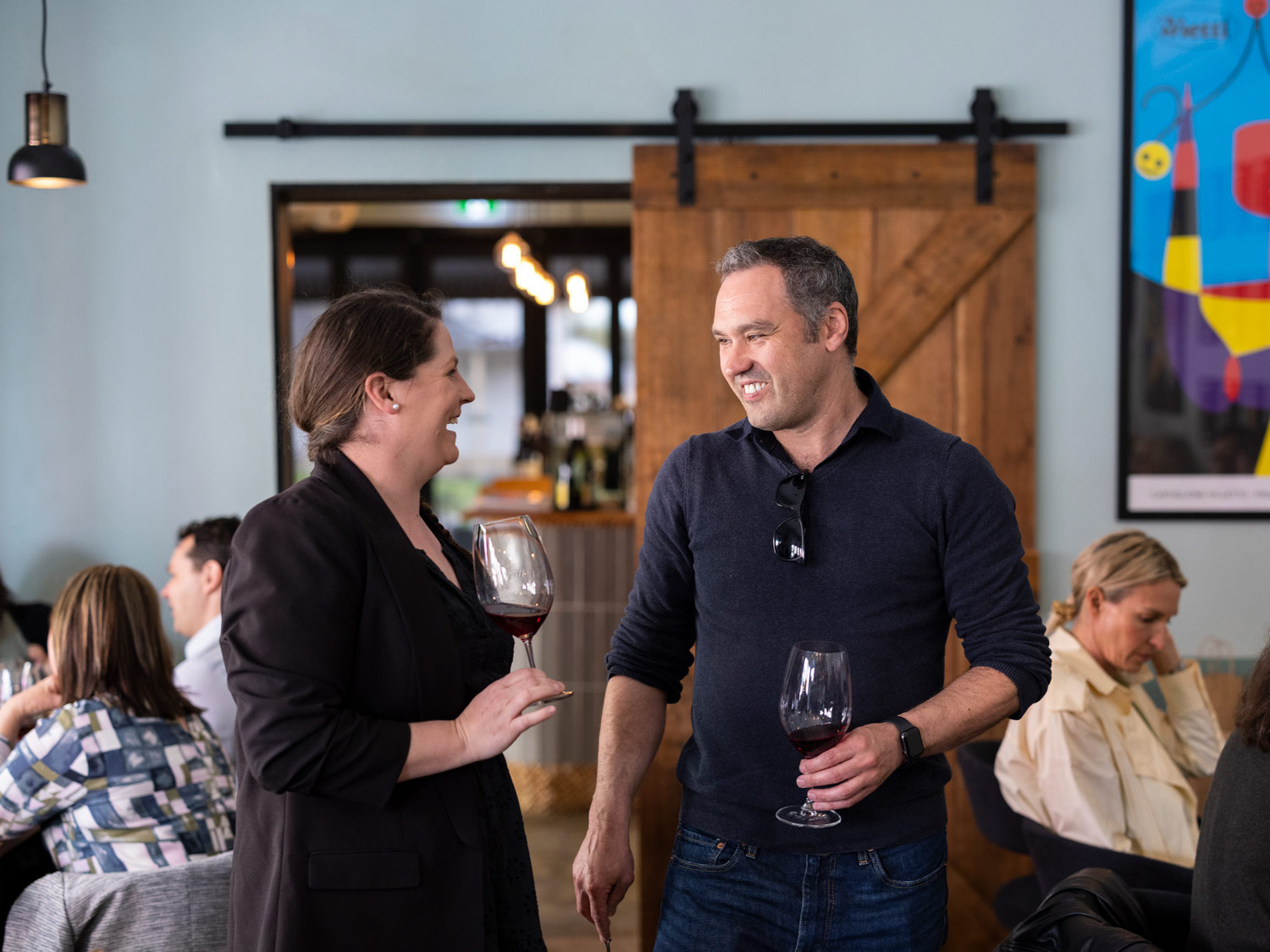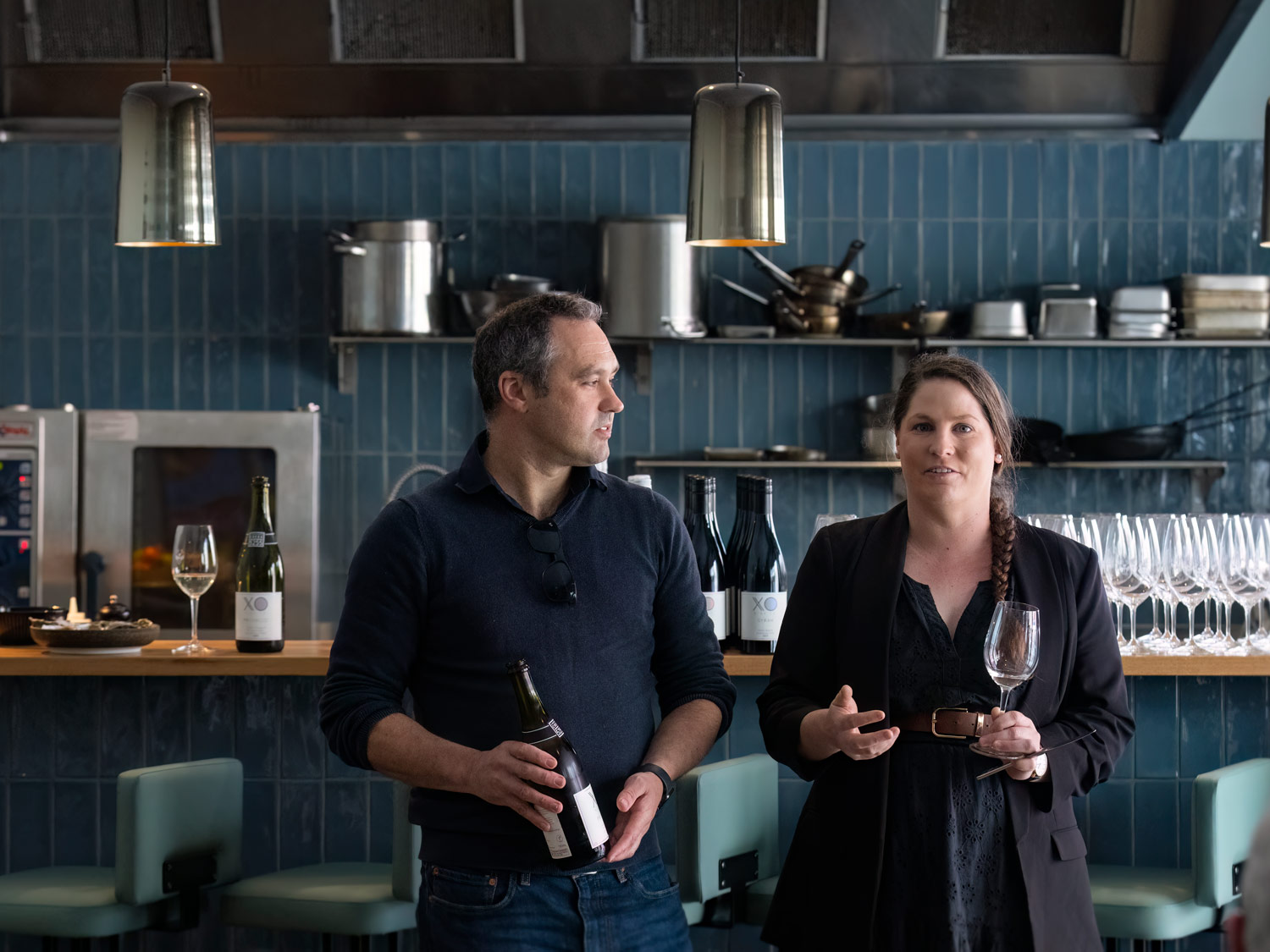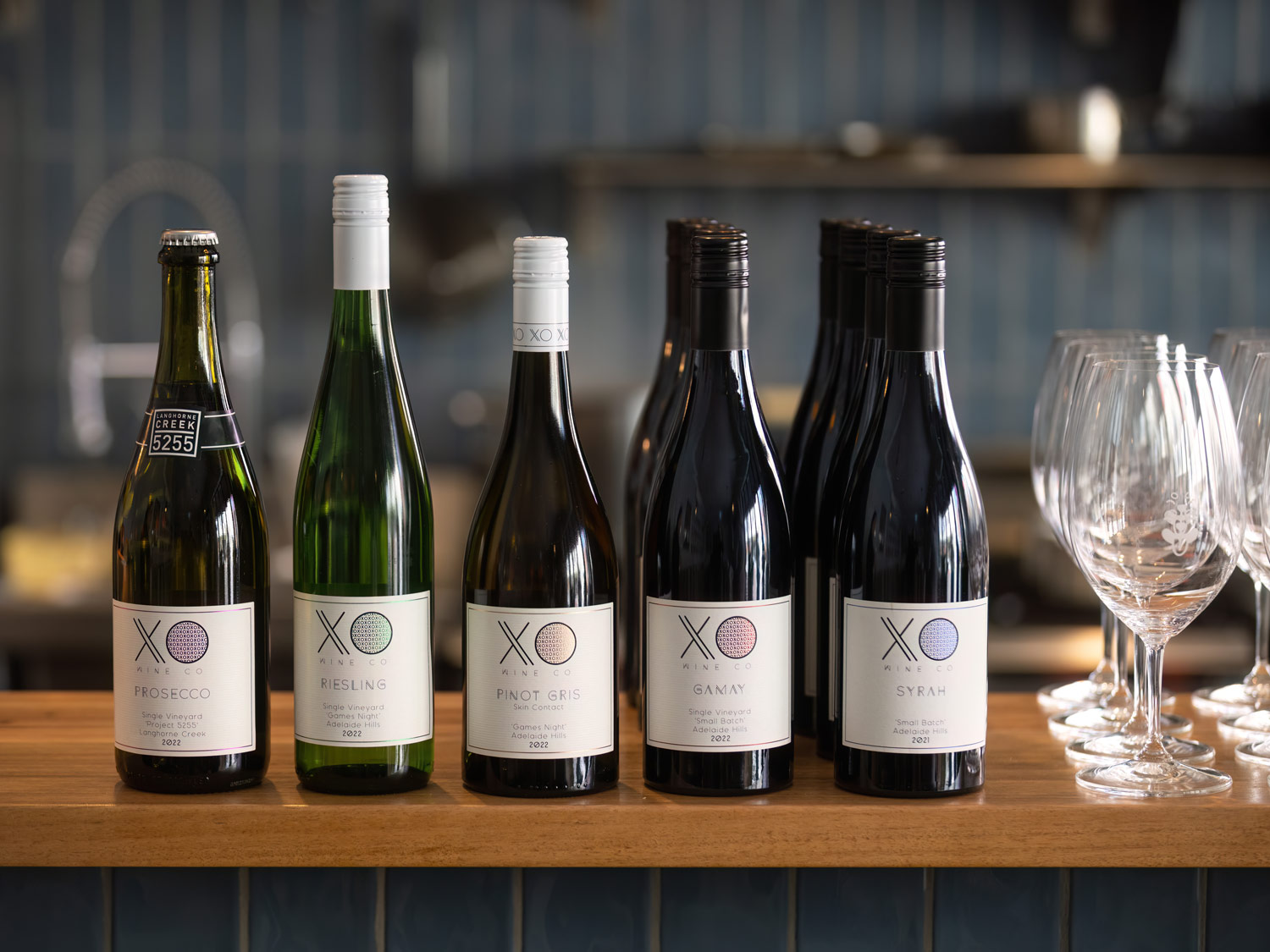Greg Clack and Kate Horstmann founded XO Wine Co. in 2017. They focus on small-batch parcels of fruit, building complexity subtly through fermentation and maturation methods, with bright fruit and sense of place taking the lead. The range of offerings under the XO has expanded each year. Today, the pair work with the established strengths of both the Adelaide Hills and McLaren Vale, with shiraz, grenache, pinot noir, chardonnay, sauvignon blanc and riesling all getting a run, alongside the emerging stars of nebbiolo, gamay, barbera, fiano and tempranillo – and the even more esoteric, cortese. A lightly skinsy pinot gris and a light chillable red that is a collage of red varieties completes the suite.
“XO was created to work with premium climate-appropriate varieties, while making complex and interesting wines that can be enjoyed in the Australian climate,” says Horstmann. “The aim was to have a label that can appeal to both traditional wine drinkers as well as new drinkers… The label was also created to be light-hearted and approachable even to those with limited wine label and wine list knowledge.”
Clack and Horstmann both boast winemaking degrees from the University of Adelaide, with Horstmann also having recently completed a masters in wine business. Clack has worked at Chain of Ponds since 2005, becoming chief winemaker in 2007. Horstmann previously worked with the South Australian Wine Industry Association, and before that, with Langhorne Creek’s Project Wine, Longview Vineyard and McLaren Vintners.
In 2018, the pair travelled to Burgundy to work vintage at Domaine Dublère in Beaune, then travelled through the wine regions of France, ending up in Piedmont. That destination says a lot about Clack and Horstmann, who have a particular affection for nebbiolo and barbera. “It was our love of chardonnay and northern Italian wines, in particular barbera and nebbiolo, that has driven our focus on the Adelaide Hills as our home,” says Horstmann.
“The Adelaide Hills has always been part of growing up. Working with fruit from the Hills for the last 18 years has shown the suitability of the region to produce world class white wines and lighter framed reds, along with great potential for some emerging varieties. The number of aspects, soil types and elevations create a great canvas of complexity and nuances in wines. The challenge has been matching sites to each variety. This is a slow work in progress, but areas are emerging that can produce wines of finesse with drive of fruit power.”
That trip was also an important one not just for in-situ experience, but because it reinforced in them the importance of working with the most suitable varieties, both for making wine and for drinking it. “With our summers hot and winters mild, South Australia is the driest state on the driest continent,” says Clack. “It is our narrative to move towards working with grape varieties that are suited to the climate. This is done by focusing on sites, whether through elevation, aspect or variety, to promote ripening later into cooler autumn days, and where water is sparingly used, if at all. It follows that these varieties are more medium bodied with great vitality and suit consumption in Australia’s climate, with our ever-increasing focus on a food and wine culture.”
The duo work closely with several family-owned vineyards that emphasise long-term sustainability. “All of the wonderful growers we work with have a distinct focus on producing the best quality fruit and have a genuine interest in the resulting wine quality,” says Horstmann. “With this engagement on all levels, it drives the passion for further experimentation in the vineyard as well as the winery, and the resulting wines are constantly improving as a result.”
At the start of the XO project, they converted a shed on their 17-hectare property in Kuitpo to a winemaking facility. Along with generous payment terms from growers they are closely aligned to, this allowed for greater freedom in the winemaking process from an early stage, rather than having to clear tanks or fermenters for other uses in a contract facility. This has meant not rushing the process, and it was “pivotal” in launching their own label, as they could make the wines as they intended.
“We’d love to plant a small vineyard at our farm in Kuitpo,” says Horstmann. “We are thinking close planted pinot noir and a variety of different chardonnay clones. Greg is also keen to plant a little Spanish variety called bobal as well, although he hasn’t got me across the line on this yet!”
With their own, albeit still very modest, winery, they have also been able to experiment and tinker more readily. “By having the ability to process all our parcels separately in small batches, we have great control over trialling winemaking methods and harvest decisions,” says Horstmann. “We have now learnt that certain vineyards and clones, especially of pinot, do not improve with whole bunch inclusion, while others thrive with a greater inclusion of whole bunches. Carbonic is a great tool, but like most things, it must be enjoyed in moderation!”
Underpinning their trials are some core principles, employing a minimal intervention mentality, with either complete indigenous ferments or very low rates of cultured yeast. No fining products are used, with extraction limited during fermentation and press cuts made early, while sulphur use is minimal. “Texture is key,” says Clack, “with a lot of work done to create texture in the wines but in an approachable style. …Judicious use of solids in chardonnay and whole bunch in reds… both can be taken too far, but both are required to produce wines with texture and complexity.”
“Even though we’ve been busy with our day jobs, we haven’t stopped experimenting with the wines we make in our little winery,” says Horstmann. “We are excited to be working with a little known Italian Grape variety, cortese, for the second year. We had the opportunity to play with this variety last year and loved the results – aromatic, bright and fresh.. A perfect addition to our portfolio.”
The future will see a cellar door built at some point, and a potential narrowing of varietal roster to fit their ethos of climate-apt varieties, with particular attention to barbera, nebbiolo, gamay, grenache and chardonnay. “The pursuit to always improve and produce higher quality wines year on year has always been a focus,” says Horstmann. “We would like to think that our best wines are still to come with small learnings every vintage. The focus is creating a life that is entwined with the culture of quality wine and food with the never-ending pursuit of perfection.”






